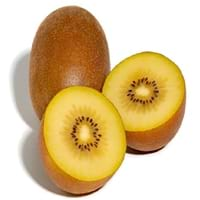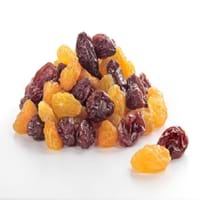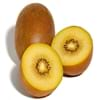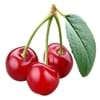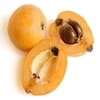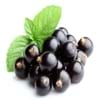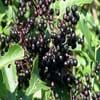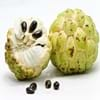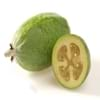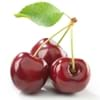Health Benefits
Asthma treatment, Heart care, Improves stomach health, Regulation of heart rate, Treatment of skin Diseases
Acidity treatment, Cancer prevention, Good for diabetics, Prevents constipation, Prevents Anaemia
General Benefits
Boosts immune system, Controls blood pressure, Eye care, Helps in weight loss
Boosts immune system, Cures fever, Eye care, Fights against infections, Strengthens bones
Skin Benefits
Brightens and lightens complexion, Heals sunburn, Reduces wrinkles, Skin rejuvenation, Treatment of acne, Treatment of dark spots, Treatment of skin diseases
Anti-aging benefits, Reduces wrinkles, Skin rejuvenation
Hair Benefits
Prevents hair loss, Promotes longer and healthier hair, Treatment of dandruff
Protects hair
Allergy Symptoms
Abdominal pains, Anaphylaxis, Breathing difficulty, Itching in tongue and other parts of mouth, Itching sensation in throat, Swelling of mouth, tongue or lips, Vomiting
Anaphylaxis, Asthma, Breathing difficulty, Coughing, Drop in blood pressure, Hives, Skin rash, Stuffy nose, Swelling of mouth, tongue or lips, Wheezing
Side Effects
Allergic reaction, Diarrhoea, Skin rash, Possibly unsafe during pregnancy
Allergic reaction
Lactating Women
Yes
Not Available
Best Time to Eat
Any time except an hour after meal
Any time except an hour after meal
Vitamin B5 (Pantothenic Acid)
Vitamin C (Ascorbic Acid)
Vitamin K (Phyllochinone)
Calories in Fresh Fruit with Peel
Calories in Fresh Fruit without Peel
Not Available
Not Available
Calories in Frozen Form
Not Available
Not Available
Calories in Dried Form
Not Available
Calories in Canned Form
Not Available
Season
Spring, Summer, Winter
All seasons
Varieties
Qing Yuan #27, Qing Yuan #29, Qing Yuan #6 and Huang Yan
Dark raisins, White or golden raisins, Sultanas and Currants
Seedless Variety
No
Not Available
Color
Brown, Yellow
Black, Blue, Green, Purple, Yellow
Inside Color
Yellow
Brown
Origin
China
Central Europe, Western Asia
Grows on
Vines
Not Available
Soil Type
Well-drained
Clay loam, Sandy loam
Climatic Conditions
Cold, Sunny
Warm
Facts about
- The name Kiwi is due to its resemblance with 'Kiwi' bird.
- This variety of Kiwi was developed by New Zealand, it is not fuzzy on the outside and it has a taste reminiscent of the mango fruit.
- 30th April is known as National Raisin Day.
- Fresno, California is known as raisin capital of the world.
- Half of world's raisin supply is produced in California.
Top Producer
Italy
United States of America
Other Countries
Chile, France, Greece, Iran, Japan, New Zealand, Portugal, Turkey, United States of America
Afghanistan, Argentina, Australia, Chile, China, Iran, South Africa, Turkey, Uzbekistan
Top Importer
United States of America
Europe
Top Exporter
New Zealand
Turkey
Botanical Name
Actinidia chinensis
Vitis Vinifera
Synonym
Not Available
Not Available
Subkingdom
Tracheobionta
Tracheobionta
Division
Magnoliophyta
Magnoliophyta
Class
Magnoliopsida
Magnoliopsida
Subclass
Dillenhidae
Not Available
Family
Actinidiaceae
Vitaceae
Species
A. chinensis
Vitis vinifera
Difference Between Gold Kiwi and Raisin
We might think that Gold Kiwi and Raisin are similar with respect to nutritional value and health benefits. But the nutrient content of both fruits is different. Gold Kiwi and Raisin Facts such as their taste, shape, color, and size are also distinct. The difference between Gold Kiwi and Raisin is explained here.
The amount of calories in 100 gm of fresh Gold Kiwi and Raisin with peel is 60.00 kcal and 299.00 kcal and the amount of calories without peel is Not Available and Not Available respectively. Thus, Gold Kiwi and Raisin belong to Low Calorie Fruits and High Calorie Fruits category.These fruits might or might not differ with respect to their scientific classification. The order of Gold Kiwi and Raisin is Ericales and Vitales respectively. Gold Kiwi belongs to Actinidiaceae family and Raisin belongs to Vitaceae family. Gold Kiwi belongs to Actinidia genus of A. chinensis species and Raisin belongs to Vitis genus of Vitis vinifera species. Beings plants, both fruits belong to Plantae Kingdom.
